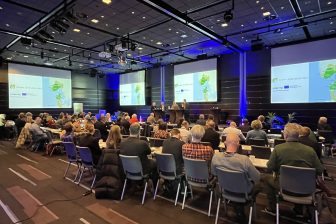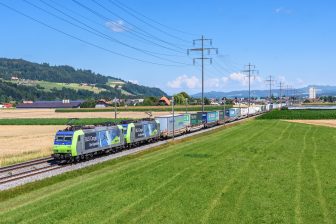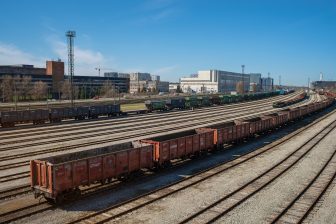New mark-ups for rail freight charges Netherlands
The Dutch government has introduced new rules that enable infrastructure manager ProRail to apply new mark-ups in the calculation of track access charges from 2019. For rail freight operators, new mark-ups will be introduced based on train path efficiency, among others. Although officials argue that this could lead to lower access charges for some, others suggest the contrary.
Mark-ups, or ‘extra’ charges are aimed at affecting the behaviour of rail operators with rolling stock, as a lower fee is charged where operators perform in a manner considered favourable for the railway network. As such, ProRail currently applies mark-ups for track performance, noise reduction and train path reservations. The various types of mark-ups will now be expanded, with specific cost incentives for rail freight operators.
New mark-ups
The cabinet’s position paper Rail in Motion (Spoor in Beweging) outlined that mark-ups will be introduced in order to stimulate more efficient use of the railway network. These mark-ups are also included in the Long Term Rail Agenda (Lange Termijn Spooragenda, LTSA). Especially rail freight operators are encouraged to make use of train paths more efficiently, for example by adjusting the journey avoid unplanned stops. Better use of train paths also includes limiting last-minute cancellations.
To promote better air quality there is a penalty system for trains that produce emissions. Operators that run diesel trains pay more for the use of the track than electric train operators. The use of less polluting fuel than conventional diesel is also encouraged. Another mark-up encourages the use of the Betuweroute for the transport of dangerous substances, the government sums up.
There is a bonus system that stimulates the installation of composite brake blocks on goods cars in order to reduce noise pollution and limit the wear and tear of the tracks. Moreover, rolling stock that is less harmful to the rail infrastructure is charged lower fees. Rail operators’ choice of rolling stock and the level of maintenance of this rolling stock are seen as important factors affecting noise nuisance for people who live near the track, vibration levels and the amount of maintenance the track requires, it explains.
Higher or lower?
According to the Dutch government, the introduction of the new mark-ups makes it legally possible for ProRail to lower track access for some rail freight operators, as the mark-ups will be applied per category. However, this does not mean an actual lowering of the track access charges for the sector, argues Hans-Willem Vroon, director of lobby organisation Rail Good. “Yes, there are plans to reduce the minimum service package with about 20 per cent, but at the end of the day, the rail freight sector pays the same, as costs will increase elsewhere.”
The introduction of new mark-ups come at a time when Germany is preparing to reduce track acces charges considerably, Vroon points out. “Germany has allocated 350 million Euros to cancel most of the mark-ups this year. Gross German track access charges are already between 7.5-30 per cent lower than what ProRail currently charges. The Netherlands should cancel its mark-ups considering its current economic position.”
Calculating track access charges
The European directive (2012/34/EU) establishing a single European railway area compels ProRail to charge train operators for costs that are directly incurred from operating a train service. This happens through charges for the minimum access package (VMT), previously known as users’ charges. In 2015, an Implementing Regulation (EU 2015/909) formulated further rules about how these costs must be calculated. With extra charges, costs that are not part of the VMT are charged to rail operators.
According to the government, mark-ups enable ProRail to present the build-up of track access charges in a more transparent and detailed manner, detailing the costs of management, maintenance and replacement. The new rules should improve management of public funding in this regard and result in a level playing field for the European railway industry.
But according to Vroon, the introduction of new mark-ups cannot be justified, as the Dutch rail freight market is unable to respond to the “relatively high VMT” of the Netherlands. “Even after the proposed lowering of the VMT and excluding the mark-ups, the Dutch VMT will be between 50-90 per cent more expensive than the VMT applied by DB Netze. The high charges are part of the reason for the slowdown in the rail freight market.”
Track Access Charges Summit
The international rail conference Track Access Charges Summit, held in Bern in 2016, played an important role in these new rules being introduced. The fourth edition of Track Access Charges Summit will take place in Amsterdam on 4 and 5 April. There, the international rail market, academics and policymakers will discuss the further implementation of European rules regarding track access charges. Wouter van Dijk, Director of Transport and Timetabling at ProRail, will provide an explanation of the new rules for calculating track access charges.






